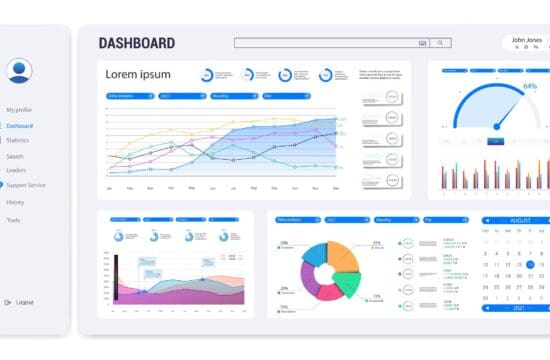What is a Data Catalog?
A data catalog is an organized and detailed inventory of all the data assets in an organization. It is a collection of metadata collaborated with search tools and data management. It helps data professionals like analysts and other data users to collect, organize, find, access, and enrich metadata. It functions as an inventory of available data that provides information to analyze the fitness of said data. Data catalogs support data discovery for analytical or business purposes and aid data governance.

The standard for metadata management in this era of big data and self-service analytics is data cataloging. Data catalogs aim at identifying and connecting datasets with rich information that will enable the provision of information to people who work with data, such as consumers, curators, stewards, subject matter experts, etc. Data sets, in short, refer to files and tables present in data lakes, warehouses, master data repositories, or other shared data resources that data workers find and access.
A report from Gartner stated that data and analytics organizations that provide agile curated internal and external datasets for a range of content authors would realize twice the business benefits compared to those that do not by 2019. However, the value of management and cataloging of metadata has not been fully understood by various organizations till today.
About 69% of companies have still not created a data-driven organization. Data unification and collaboration are key to the success of enterprises. This blog will explore data catalogs as well as their benefits and elaborate on how they aid data governance.
How Do Data Catalogs Work?
Data catalogs include various features and functions based on the core capability of data cataloging. Since it is impractical to attempt this using manual effort, automated discovery of datasets is essential to build initial catalogs and continue the ongoing discovery of data assets. Machine learning and artificial intelligence are key to collecting metadata, semantic interference, and tagging.
A few features and functions of data catalogs include robust searching capabilities for datasets, dataset evaluation features like previewing and reading user ratings, and data access, including protections for security, privacy, and regulatory compliance. It provides data curation, collaboration, data usage tracking, intelligent dataset recommendations, and data governance.
How Does Data Governance Aid Compliance with Privacy Laws?
Data catalogs assist in data search, discovery, stewardship, and analytics and thus aid Data Governance programs. Creating data catalogs is the first step to implementing data governance programs. It helps organizations make data-driven decisions. Furthermore, it ensures consistent data quality standards and strategically manages data as an asset for accurate and secure data.
Implementing data catalogs requires assigning accountability for the metadata to certain people in the organization. Their responsibilities would include defining the metadata to be collected in a tool, producing metadata that will be available to the organization, and using metadata to assist in the completion of tasks.
To devise a data catalog that supports data governance programs, metadata must be validated by entering it into tools, maintained, and kept available. This will ensure the success of the data governance program.
Some facets of data governance can be implemented quickly and efficiently. These include:
- Recognizing roles and responsibilities in alignment with the organization’s culture;
- Applying data governance to improve defining, producing, and using data;
- Developing and delivering socialization and communication to govern data effectively; and
- Activating data stewards for better understanding and protecting data that is considered critical.
Similarly, aspects of the data catalog that can be implemented for effective data governance include:
- Automating ingestion of metadata into tools;
- Using machine learning for better data management, governance, and usage;
- Delivering an efficient metadata hub to combine conventional glossary and stewardship and creating a marketplace for data intelligence that is centralized; and
- Activation of stewards to widen the scope of defining, producing, and utilizing metadata.
Government regulations revolving around data are consistently and gradually increasing. This requires organizations to exhibit their provenance of data. A few examples of this include presenting the source of the data, its transformation before reaching the final target, its movement across the organization, and its impact. This mandates data lineage.
A data catalog is thus the best place to store and manage important business information to fulfill the parameters of data governance compliances.
How to Formulate Data Governance Strategies?
A data governance strategy involves planning that consistently fulfills the requirements of organizations’ data management. These include assigning responsibilities, defining policies, creating processes, and establishing data management and cataloging measures. A data governance strategy creates the framework for data governance.
There are two kinds of data governance strategies:
Defensive Data Strategy
It aims at minimizing data risk. Some of the activities involved include:
- Complying with regulatory laws concerning data privacy and financial reporting;
- Detecting and reducing the risks of fraud and theft; and
- Identification, standardization, and governance of data sources that are considered authoritative.
Offensive Data Strategy
This strategy supports business objectives. Activities associated with this include:
- Obtaining customer need insight;
- Integration of customer and market data to aid planning business goals that are set for the future;
- Establishing support for sales and marketing; and
- Improving process and increasing efficiency of operations.
It is best to merge and use both offensive and defensive strategies to ensure an efficient data governance strategy. The strategy should be simple, clear, and instructional so that every person involved in working with the data within the organization can easily understand the process and ensure that it is followed at every step.
Conclusion
Data catalogs are vital for organizations these days. Managing mass amounts of data in the era of big data, data lakes, and self-service would otherwise be a painstaking task. The use of AI and Machine Learning has simplified data catalogs governance and management. These data catalogs are also key to staying in line with privacy laws and regulations. With Secuvy, Businesses can be confident that assured that sensitive data is maintained and protected as per multiple privacy regulations such as the California Consumer Privacy Act (CCPA) and General Data Protection Regulation (GDPR).
























